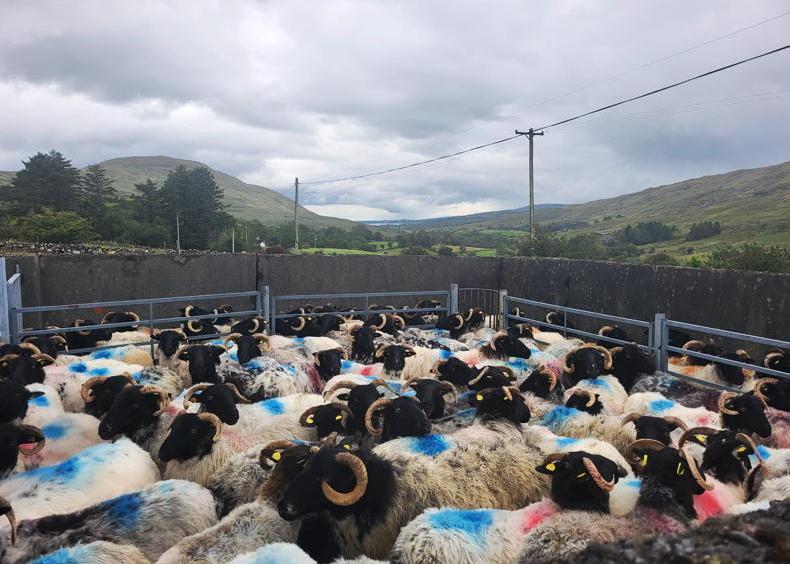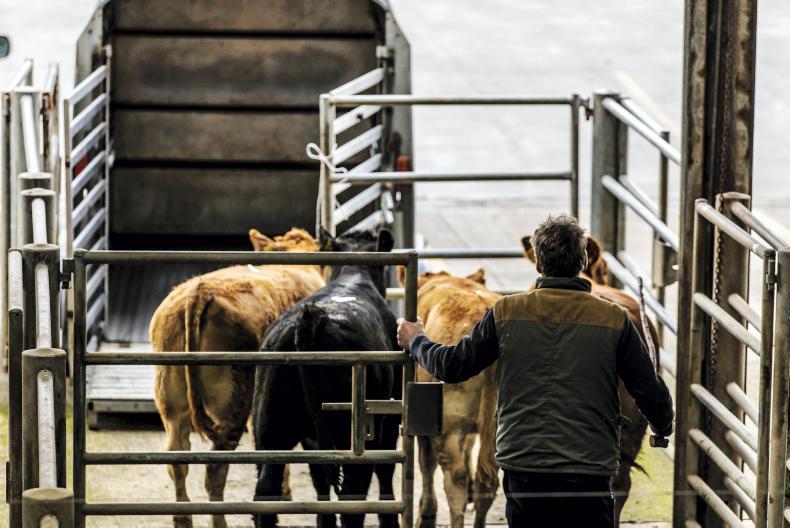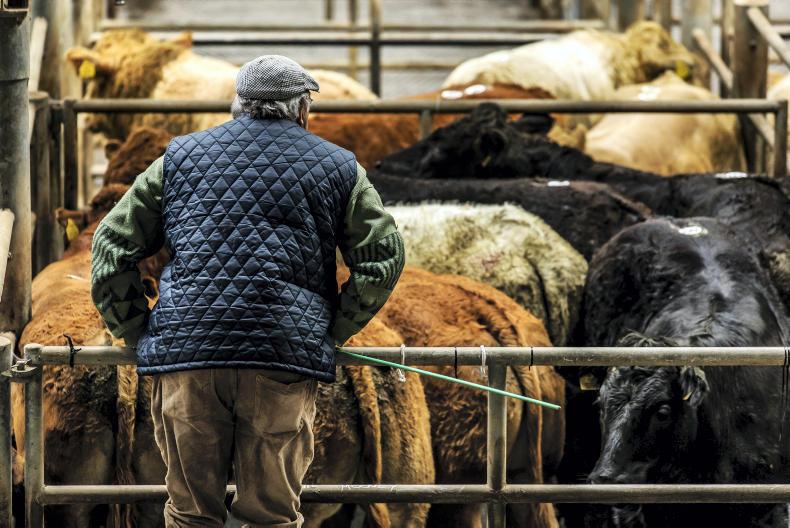There are a variety of tick-borne diseases affecting sheep in Ireland. These are all carried by a species of tick known as Ixodes ricinus. Tick-borne diseases occur in animals which are grazed on rougher pastures rather than ryegrass-type pastures. There are seasonal peaks of tick activity in the spring and autumn, but wetter summers and milder winters have meant that tick-related diseases can occur outside what was considered the normal season.
On farms where tick-borne diseases occur, immunity develops so that any disease occurrence is usually confined to young stock and bought-in stock.
What are the tick-borne diseases?
Tick-borne fever
Tick-borne fever (Ehrlichia phagocyt-ophila) is usually a mild and transient condition. However, it causes a transient immunosuppression which can facilitate the occurrence of other diseases and limit the efficacy of any vaccines administered during the course of the disease.
Q fever
Q fever is caused by Coxiella burnetti, a bacterium, and is quite similar to tick-borne fever. It is likely to be a cause of abortion in sheep. Similar to tick-borne fever, it is thought to have immunosuppressive effects.
Tick pyaemia
Tick pyaemia is a condition of young lambs where the tick inoculates the Staphylococcus aureus bacteria into affected lambs. This gives rise to septicaemia (bacteria and toxins in the blood), resulting in dullness, depression, inappetance, etc. The bacteria can then seed out in internal organs such as the liver and joints and can give rise to spinal abscesses. If the lamb is concurrently infected by tick-borne fever, then the lamb is likely to be a lot sicker and could die.
Treatment involves antibiotic treatment of the Staphylococcus aureus bacterial infection.
Louping ill
This is a virus which causes encephalitis (infection of the brain) in sheep. It derives its name from a Scots Gaelic term which describes a leaping gait. This disease tends to occur in clearly demarcated geographical areas. Bought in animals tend to be most susceptible in these areas. A vaccine is available, but can only be used under special licence. Managing tick populations is the preferred control method.
Predisposing factors
Tick-borne diseases require the presence of ticks to facilitate the transmission of the various diseases. Ticks are found on what is considered rough grazing where there is vegetation such as rushes. In warm, moist conditions, the ticks make their way up the vegetation on to the tips of the vegetation from where they jump on to hosts. This typically occurs in the spring and autumn. The improvement of pastures if possible will remove the environmental conditions conducive to tick survival.
Complications of tick-borne disease
Many of the tick-borne diseases cause fever and immunosuppression and can predispose to other infectious diseases.
Control
Control of tick-borne diseases necessitates controlling tick populations through the removal of vegetation suitable for tick survival. Deep-matted grass, where the pasture may not have been grazed for more than a year, is a particular concern. External long-acting parasiticides specifically aimed at ticks can be used to kill ticks during periods of greatest risk.
This article first appeared in an Irish Farmers Journal Focus supplement on 14 May 2016.
Read more
Cutting down the shearing workload
Ireland's sheep sector set for shake-up – IGA conference
There are a variety of tick-borne diseases affecting sheep in Ireland. These are all carried by a species of tick known as Ixodes ricinus. Tick-borne diseases occur in animals which are grazed on rougher pastures rather than ryegrass-type pastures. There are seasonal peaks of tick activity in the spring and autumn, but wetter summers and milder winters have meant that tick-related diseases can occur outside what was considered the normal season.
On farms where tick-borne diseases occur, immunity develops so that any disease occurrence is usually confined to young stock and bought-in stock.
What are the tick-borne diseases?
Tick-borne fever
Tick-borne fever (Ehrlichia phagocyt-ophila) is usually a mild and transient condition. However, it causes a transient immunosuppression which can facilitate the occurrence of other diseases and limit the efficacy of any vaccines administered during the course of the disease.
Q fever
Q fever is caused by Coxiella burnetti, a bacterium, and is quite similar to tick-borne fever. It is likely to be a cause of abortion in sheep. Similar to tick-borne fever, it is thought to have immunosuppressive effects.
Tick pyaemia
Tick pyaemia is a condition of young lambs where the tick inoculates the Staphylococcus aureus bacteria into affected lambs. This gives rise to septicaemia (bacteria and toxins in the blood), resulting in dullness, depression, inappetance, etc. The bacteria can then seed out in internal organs such as the liver and joints and can give rise to spinal abscesses. If the lamb is concurrently infected by tick-borne fever, then the lamb is likely to be a lot sicker and could die.
Treatment involves antibiotic treatment of the Staphylococcus aureus bacterial infection.
Louping ill
This is a virus which causes encephalitis (infection of the brain) in sheep. It derives its name from a Scots Gaelic term which describes a leaping gait. This disease tends to occur in clearly demarcated geographical areas. Bought in animals tend to be most susceptible in these areas. A vaccine is available, but can only be used under special licence. Managing tick populations is the preferred control method.
Predisposing factors
Tick-borne diseases require the presence of ticks to facilitate the transmission of the various diseases. Ticks are found on what is considered rough grazing where there is vegetation such as rushes. In warm, moist conditions, the ticks make their way up the vegetation on to the tips of the vegetation from where they jump on to hosts. This typically occurs in the spring and autumn. The improvement of pastures if possible will remove the environmental conditions conducive to tick survival.
Complications of tick-borne disease
Many of the tick-borne diseases cause fever and immunosuppression and can predispose to other infectious diseases.
Control
Control of tick-borne diseases necessitates controlling tick populations through the removal of vegetation suitable for tick survival. Deep-matted grass, where the pasture may not have been grazed for more than a year, is a particular concern. External long-acting parasiticides specifically aimed at ticks can be used to kill ticks during periods of greatest risk.
This article first appeared in an Irish Farmers Journal Focus supplement on 14 May 2016.
Read more
Cutting down the shearing workload
Ireland's sheep sector set for shake-up – IGA conference










SHARING OPTIONS